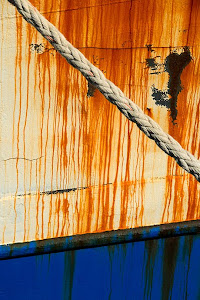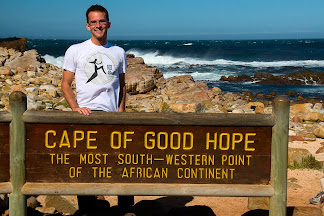
When the bus departed again, we drove up Chapman's Peak Drive to those high cliffs that towered over the calm water. At the edge of the bay, a majestic promontory known as the Sentinel loomed over a boat as it skirted the rugged shore.

Crossing the Cape Peninsula to the eastern coast, we arrived at Boulders Bay in about an hour. The attraction here is the colony of adorable African penguins on picturesque Foxy Beach.
Our final stop of the tour was twenty minutes to the south – the Cape of Good Hope. We hopped on bicycles and rode along the roads past the beautifully rugged terrain. At times, the powerful wind that plagues the Cape hindered our progress. We made it to the visitor center, where we ate lunch before continuing to the Cape of Good Hope itself. As we approached the coastline, the gusts of wind intensified even more, and the waves crashed with great force on the jagged rocks. This is the most southwestern point in Africa – it used to be considered the southern tip of the continent, but with the development of better mapping techniques, Cape Agulhas a bit further to the east was found to extend further south. For an hour, we hiked along the rocky coastline around Cape Point and admired small sections of beach sheltered from the wind by soaring cliffs.
From the Cape of Good Hope, it took just over an hour to get back to Cape Town, where I said farewell to Chiaki as she left for the airport. It was now only me and one other girl, Amy, remaining in Cape Town. We went out to a nearby Thai restaurant for dinner, and then I relaxed the rest of the evening.









No comments:
Post a Comment